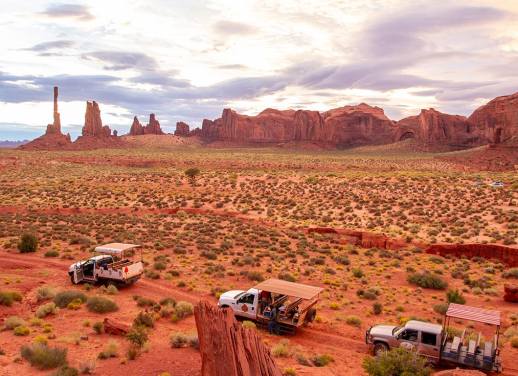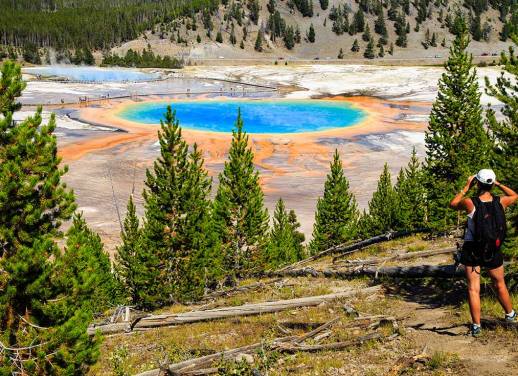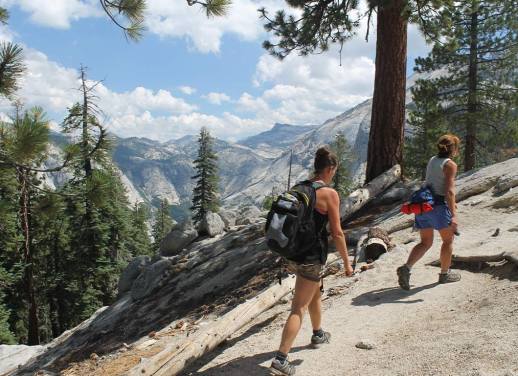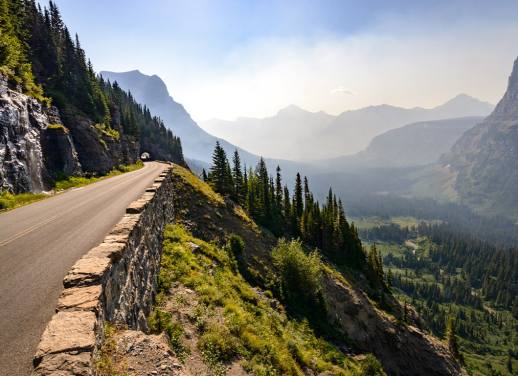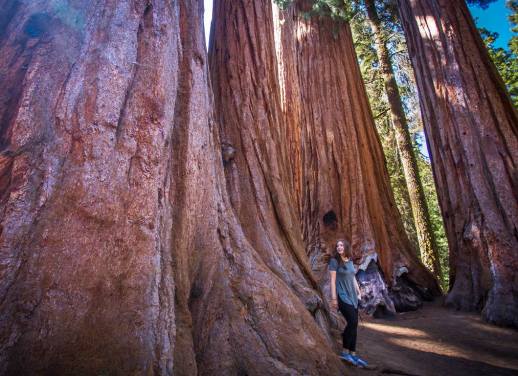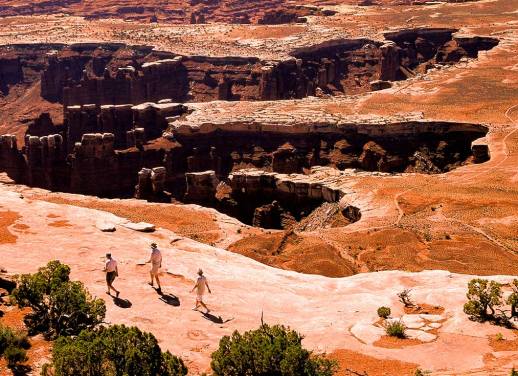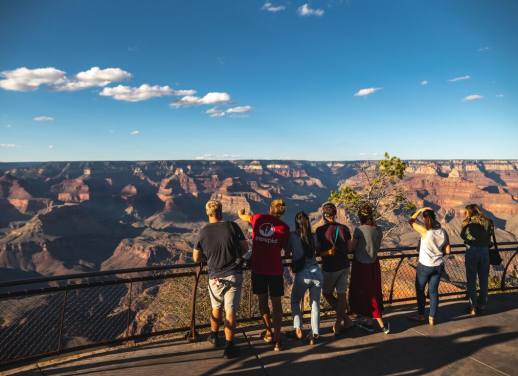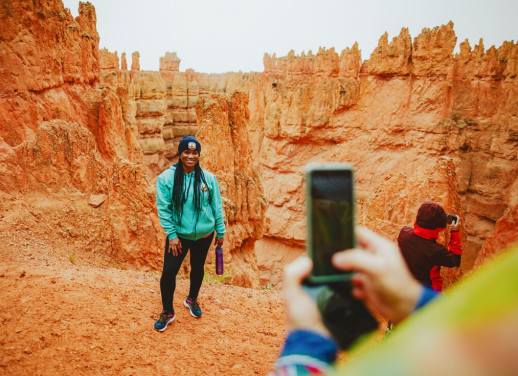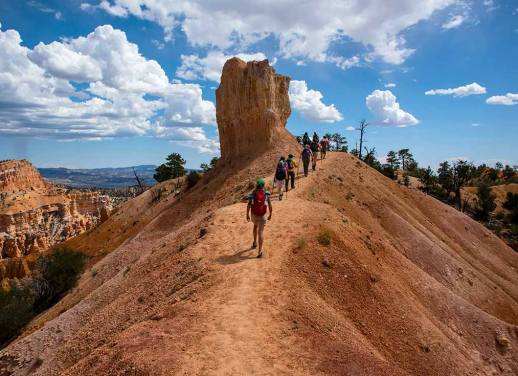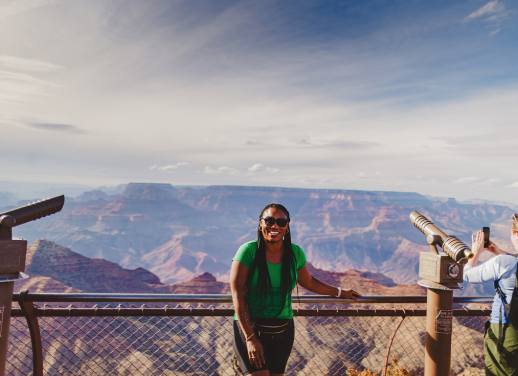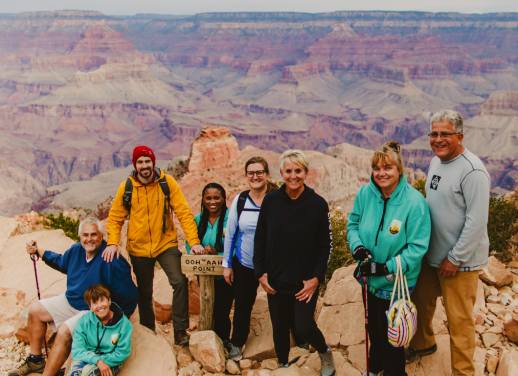Travelling to any of the United States’ 63 national parks is a must have experience, but navigating these wild places is no easy feat.
If you’re looking for an adventure among natural wonders, diverse landscapes, the pursuit of personal growth and physical rewards that make you feel small in this big, beautiful world, then it’s time for you to venture into one of the United States national parks.
Driving into the parks, requiring the right passes and permits, navigating the wilderness, arm wrestling with service, understanding the proper safety measures and planning the right activities can add a challenging layer to these types of trips. Are you not exhausted just from reading that list?
Why not let Intrepid handle the nitty-gritty – permits, passes and all the tricky bits – so all you need to do is show up for the adventure? Ready to discover the best parks with a local leader, hassle-free? Let’s dive in.
Best National Parks for Hiking
Odds are that if you’re looking to visit a national park, you’re probably hoping to get some good hiking in. Hundreds of miles of trails, mind-blowing views and a variety of terrain have put these parks on the list.
Grand Teton National Park, Wyoming
From seasoned hikers to beginners, Wyoming’s alpine scenery and Teton mountain range offer something for everyone. The park hosts more than 250 miles of trails that wind through mountains and around lakes, boast hidden waterfalls and offer dramatic views shaped by billions of years of natural forces.
When it’s time to give your legs a break, kayak through Snake River. Then, lace the boots back up and scale its rugged granite peaks or take a moderate hike to Inspiration Point for sweeping views of Jenny Lake, Jackson Hole and the Teton mountain range.
Step into the wild
Zion National Park, Utah
Zion has such iconic hikes that it has a strict permit process to limit those who can access some of the trails, so you aren’t stuck in human foot traffic. I once travelled across the country for a specific Zion hike and completely missed out on it, so I’d highly recommend travelling with a company like Intrepid that handles those logistics for you.
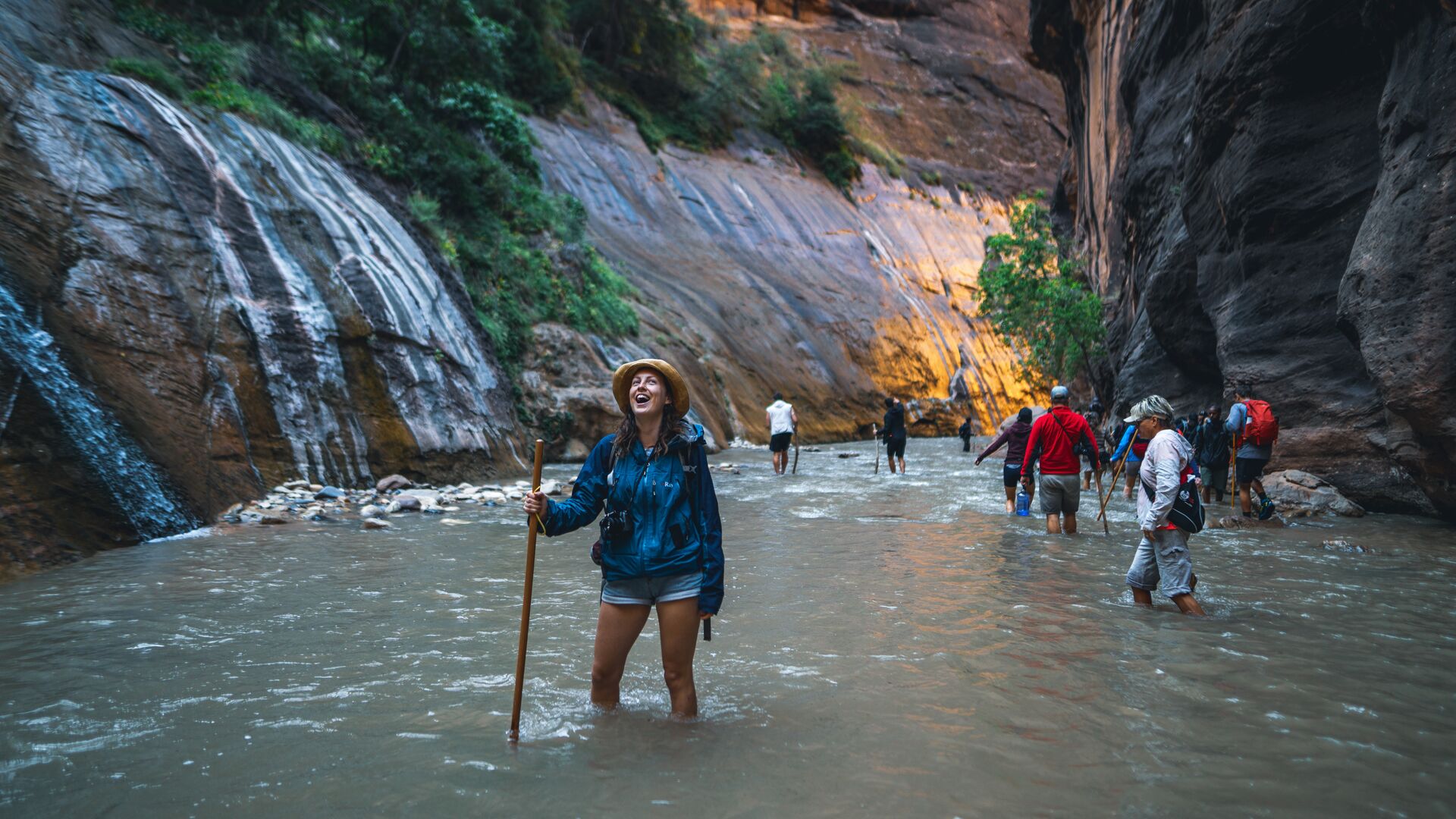
It’s not just the sheer amount of hiking that Zion offers; it’s the varied landscapes that allow you to see something new with every step. Hike through moving water through the Virgin River in The Narrows, take in the panoramic views of Scout Lookout and brave Angel’s Landing, one of the most legendary trails in the US.
Since it is such a busy park for hiking, your local leader will use their expertise to ensure you see the best views while taking on less-travelled tracks, so you see more canyons with fewer crowds.
Yosemite National Park, California
With great views comes great hiking and that’s why Yosemite sits high on the list for both categories. The park offers a variety of trails for all skill levels, so you can still enjoy the best of the park without scaling Half Dome (although you can do it if you want to get your adrenaline pumping).
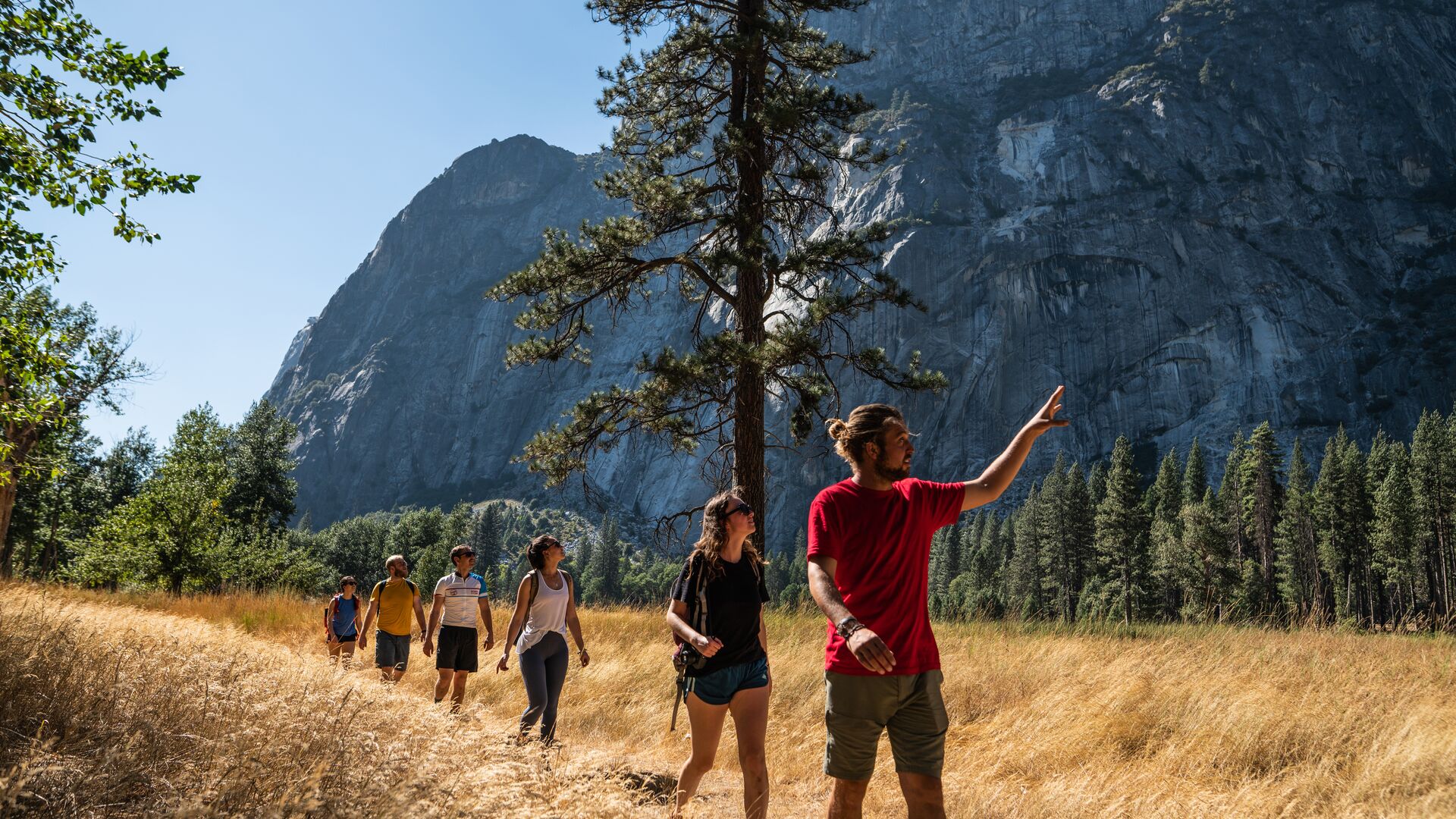
Intrepid will take you along Yosemite’s signature hike through the Mist Trail, with memorable views of Vernal Falls and Nevada Falls, before hitting the park’s most iconic rock face. With flexible itineraries, your local leader will provide hikes at your comfort level with alternative routes based on preferences and abilities.
Most Scenic National Parks
This category is hard to narrow down because every national park in the country has impressive and photogenic scenery. Based on how far your jaw will drop at these spots, here are your best options for the most unforgettable views.
Yosemite National Park, California
Yosemite is often rated as the No. 1 national park in the US and for good reason. With gushing waterfalls, towering sequoia trees, lush meadows and unique rock formations, this is a park you don’t want to miss.
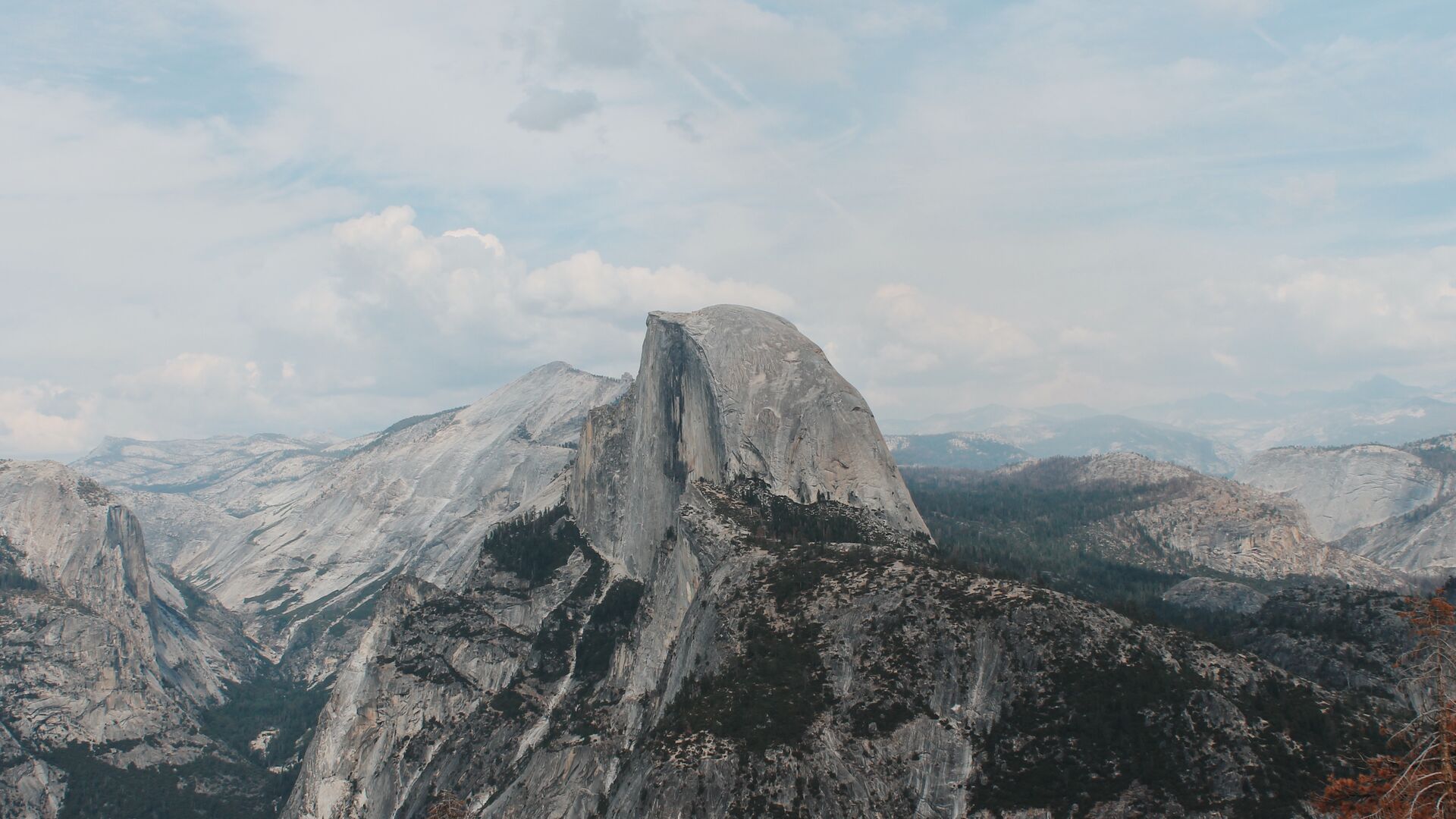
While the most popular areas are a must-see, like Yosemite Valley with Half Dome and El Capitan, travelling with an Intrepid local leader will allow you to see the best spots while still expertly avoiding the crowds that are bound to be there.
Hike the Mist Trail, the park’s signature hike, explore the Cathedral Lakes and see for yourself why this park is so highly rated.
Glacier National Park, Montana
When it comes down to the most beautiful parks, Glacier is a no-brainer. Whether you’re rafting down the Flathead River, taking in the Gates of the Mountains, or traversing the two mountain ranges with views of some of its 700 lakes, you will be rewarded with wildly impressive sights that will take your breath away.
Glistening glaciers, turquoise alpine lakes, ice-carved valleys and majestic mountain peaks are sure to make you ooh and awe your way through the park.
Zion National Park, Utah
As one of the most visited parks in the country, the pink Navajo sandstone cliffs and orange slot canyons beckon visitors to this truly indescribable destination. Hiking Angel’s Landing and trudging through the water in The Narrows are musts for every Zion itinerary. Its vibrant colours and unique geological features make it one of the most visually captivating among US national parks.
See the views for yourself
Least Crowded National Parks
Don’t let the words ‘least visited’ deter you from these next parks. With so many hotspots to choose from, people tend to go for the ones they hear the most about or see on social media, but I dare you to branch out.
Denali National Park, Alaska
It surprises me that this park is one of the least visited in the country, but I think people are intimidated by its backcountry expanse and the tallest peak in North America. There isn’t an abundance of marked trails and it is known as a place for adventurers and thrill seekers to figure it out for themselves, so there are more safety measures to take into consideration than other parks. Sure, this may deter crowds, but that’s the pro of travelling with a local leader; their expert knowledge of the area and expertise in safety measures make exploring these adventurous spots both thrilling and seamless.
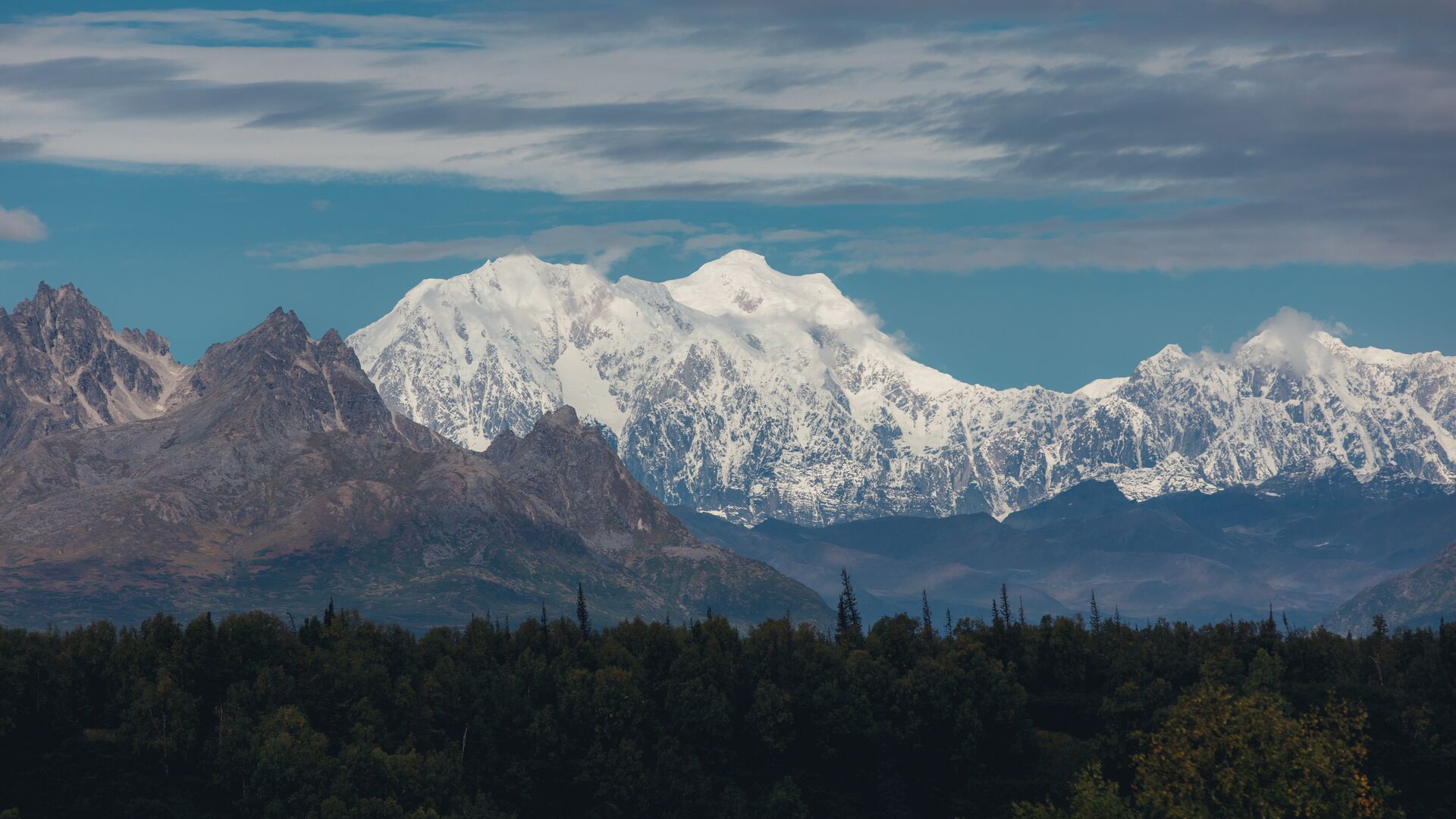
Badlands National Park, South Dakota
Hidden in South Dakota is a national park with dramatic, eroded formations, sharp pinnacles, deep gorges and rugged beauty in the middle of the prairie. The hiking trails that cut through its unique geology offer a distinctive experience. Plus, it’s one of the world’s richest fossil beds, which is pretty cool.
Vibrant sunsets against the stark, colourful layers of sediment are a photographer’s dream and buffalo at Cluster State Park, bighorn sheep, antelope, bison and adorable prairie dogs make it a haven for wildlife enthusiasts.
Sequoia National Park, California
Sequoia National Park is one of those places you visit and immediately feel humbled and small. The drastic scale of the trees is incredible and it’s home to some of the tallest trees in the world. It is, in fact, home to the largest tree by volume on Earth, named the General Sherman tree. With more than just stately sequoias, you can also explore caves and more than 100 hiking trails that traverse through rugged mountain terrain, sweeping vistas, alpine meadows, quiet wilderness, rivers and waterfalls.
Best National Parks During Winter
A national park in winter?! Absolutely! The low season is a prime time to see the parks from a new perspective while avoiding the chaotic crowds.
Joshua Tree National Park, California
What better time to visit the desert than in winter? Avoid the large crowds and scorching heat and enjoy the desert cactus gardens, striking rock formations and mountain ranges in the comfortable cooler days of winter.
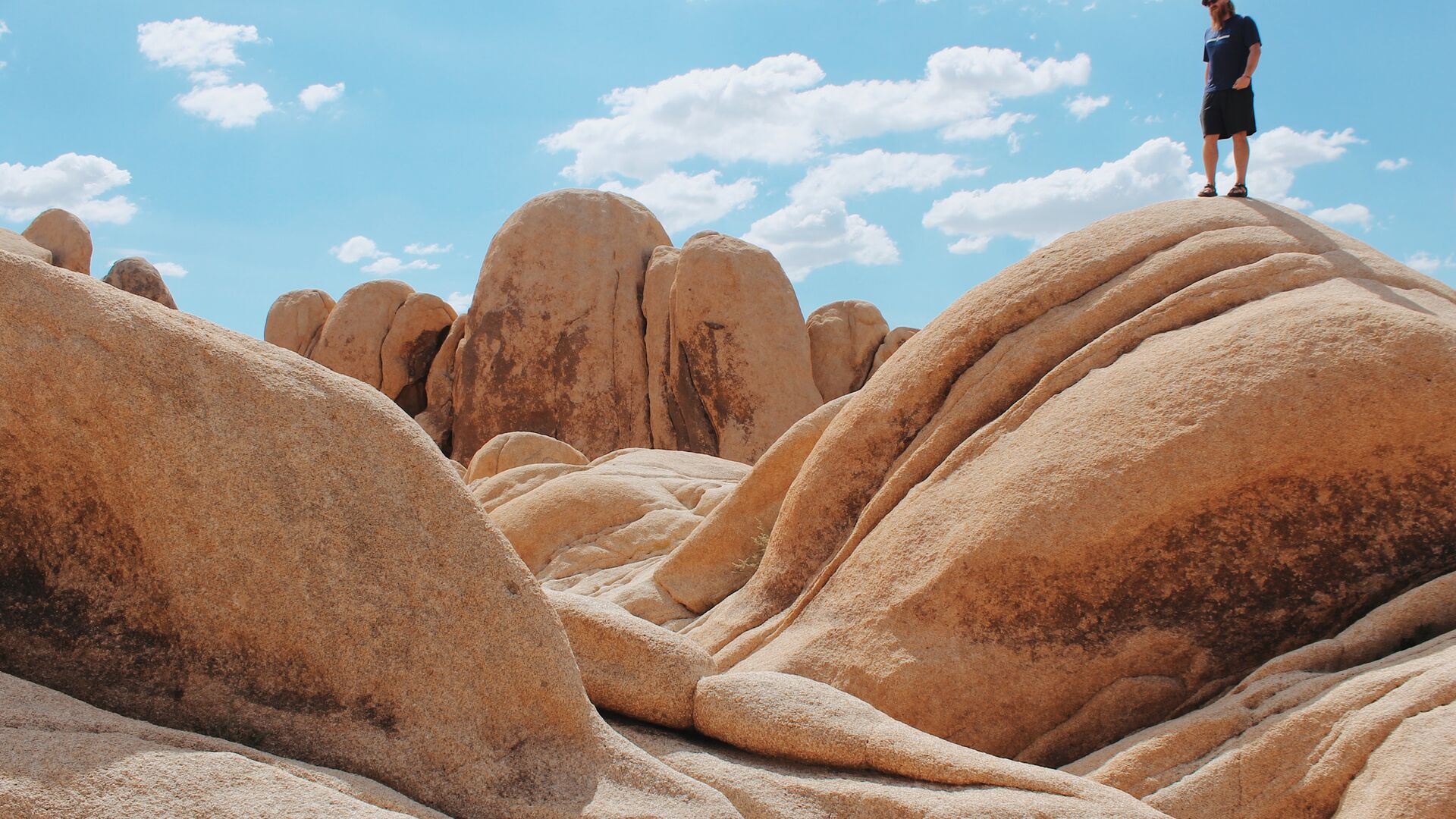
With 300 miles of hiking trails, there’s plenty of ground to cover in a trip to Joshua Tree, appropriately named for its funky, you guessed it, Joshua trees. With mild days and the sun still shining high in the desert climate, it’s the perfect time for scenic hikes around the park, exploring the diversity of plants and animals and having a peaceful and immersive experience without the crowds.
Bryce Canyon National Park, Utah
This park may be more photogenic in the winter than during its peak season. While you will need to pack some extra layers, the nip in the air will be worth the enchanting view. The stark white contrast of the snow against the red rocks, with the blue skies and evergreen trees sprinkled along the landscape, is magical.
Many of the hikes throughout the park are open year-round, even in the snow, and winter provides the optimal time to get lost in the hoodoos without the foot traffic.
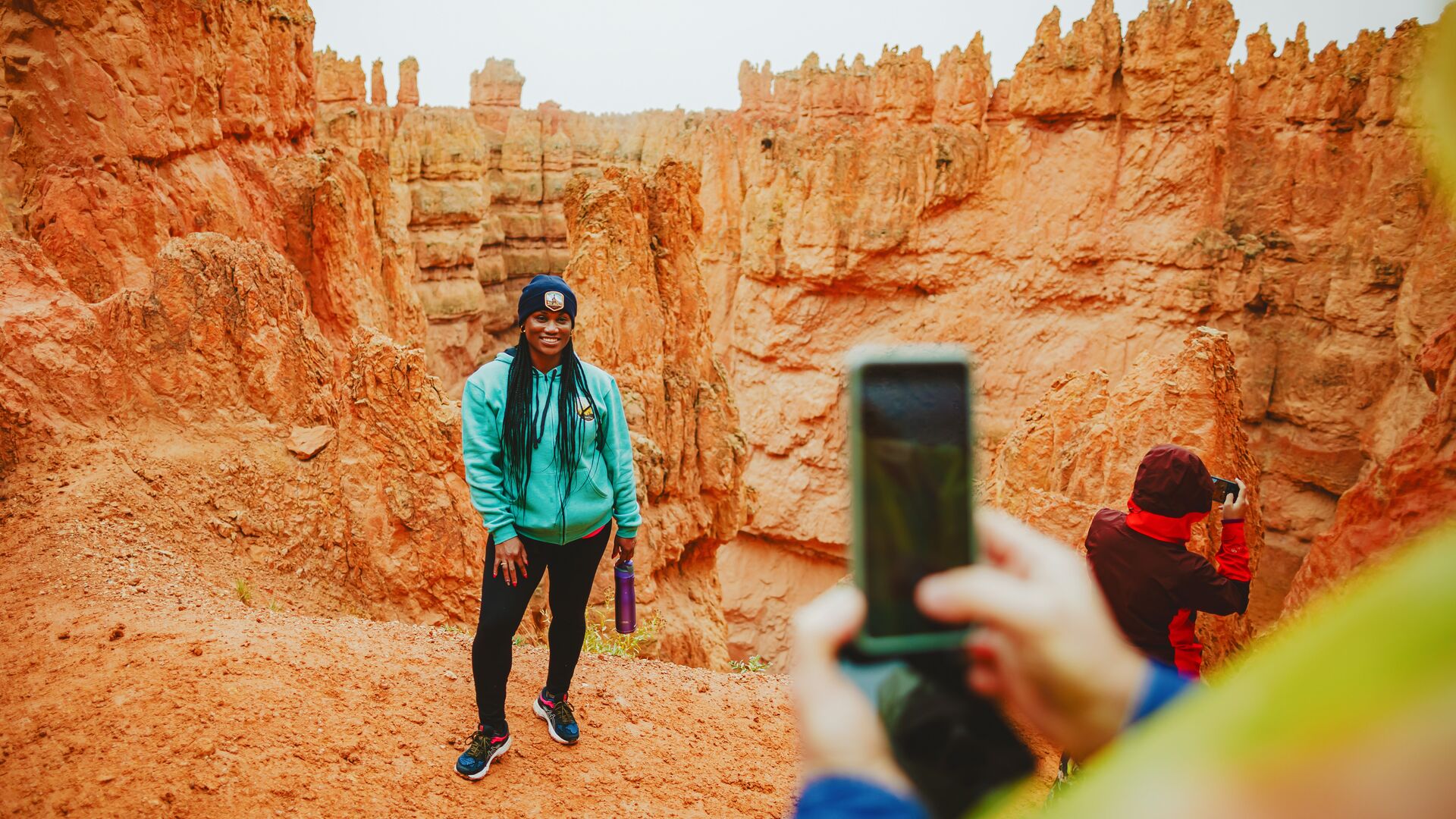
There can occasionally be road closures, but the park remains open. You can check in on the National Park Services website to stay up to date on forecasts, roads, trails and other park operations if you’re curious, but your local leader will worry about those details for you.
Capital Reef National Park, Utah
Ever wondered what it would look like if it snowed on Mars? Maybe not, but now you’re trying to picture it. Experience the otherworldly landscape for yourself with a trip to Capital Reef in the winter.
You’ll still get stunning high desert views and witness a supernatural landscape, just with a chill in the air and fewer crowds to wrangle through. Hike to the impressive Hickman Bridge, a natural sandstone bridge spanning 133 feet, surrounded by rock formations and rare desert plants.
Even just driving through the park is like teleporting to outer space.
Your winter wonders await
Best National Parks for Wildlife
You may want to avoid crowds on the trails, but seeing some wildlife is probably high on your list. These next parks offer more than stunning scenery – they’re also alive with alluring animals that make every hike a bit more interesting.
Yellowstone National Park, Wyoming
I don’t know about you, but when I think about Yellowstone, I think about wildlife. America’s first national park is home to buffalo, elk, grizzlies and various animals scurrying around the park. The Lamar Valley is even dubbed ‘America’s Serengeti’, where wolves, bison and bears (oh my!) congregate.
Hop on a trip with Intrepid and you can join a naturalist wildlife guide on a wolf-tracking adventure in a remote section of the park. How cool is that?
Denali National Park, Alaska
Remember when I mentioned Denali’s six million acres, mostly backcountry with unmarked trails? Yeah, you can imagine just how much wildlife thrives there.
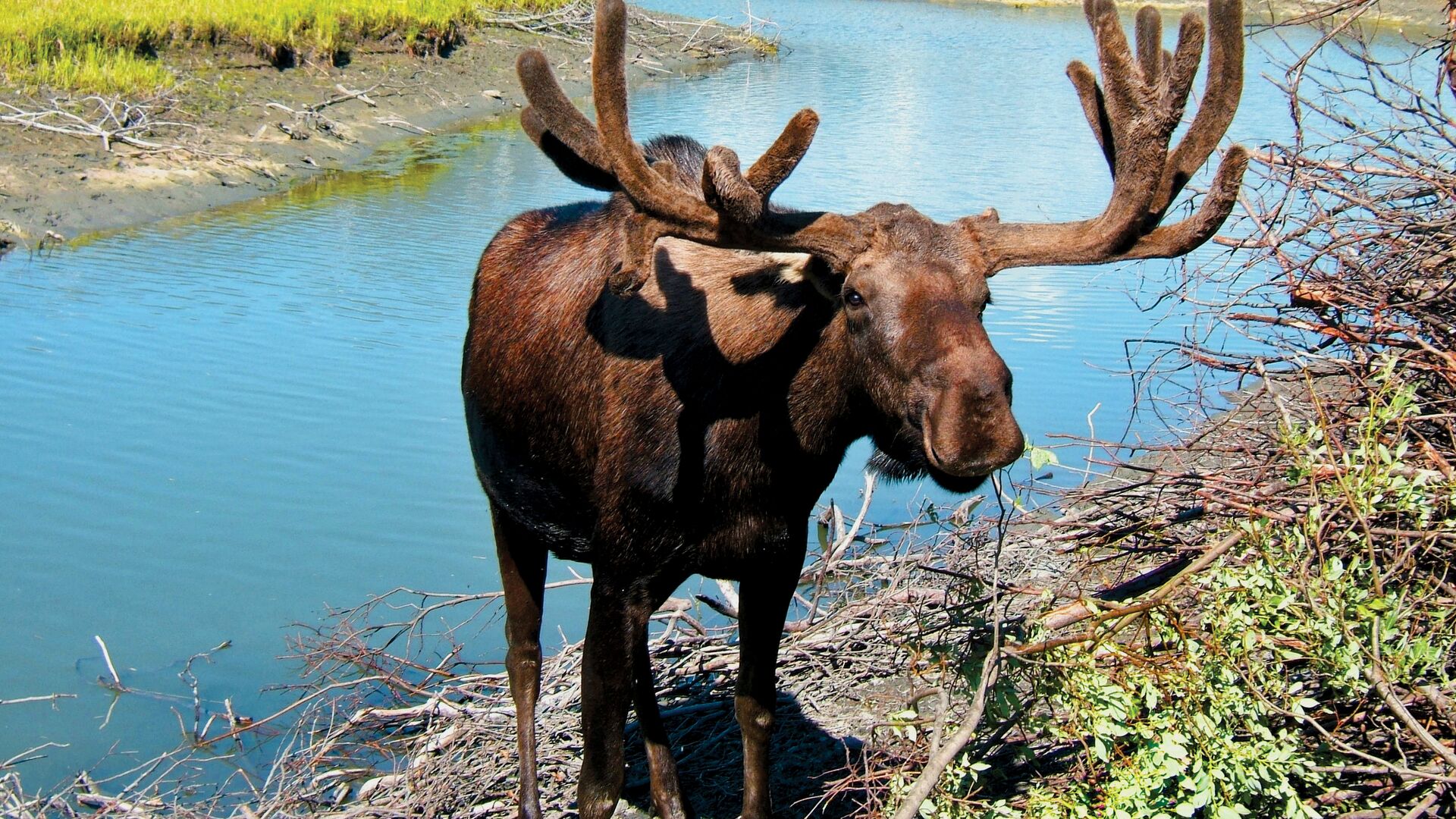
Imagine encountering grizzly bears, horned Dall sheep, moose, wolves, caribou and a variety of bird species (if that’s your thing…I know birds can be controversial). When you visit Denali, these wildlife sightings are almost guaranteed. If you’re keen on seeing wildlife, Alaska is a clear choice.
Glacier National Park, Montana
If I could trade places with an animal, Glacier National Park would be my top pick. This enchanting park is a wildlife hotspot where you might spot bears, beavers, bighorn sheep, elk, mountain goats, lynx, mountain lions and the utterly adorable pika. If you’ve never seen a pika before, do yourself a favour and look it up. You’ll be hard-pressed not to let out an involuntary ‘awe’.
Best National Parks for Camping
To really experience a park, you should stay overnight. These next spots are International Dark Sky Parks, ideal for stargazing and soaking up the night sky’s magic. Chatting by the campfire with like-minded travellers, counting shooting stars and beating the crowds to the trails – Sounds pretty good, right?
Zion National Park, Utah
Camping at Zion is available year-round and offers an unbelievable opportunity to see shooting stars, meteor showers and the night sky in full glory. Plus, the red rock canyons, mesas and gorgeous landscape make for a pretty epic camping trip.
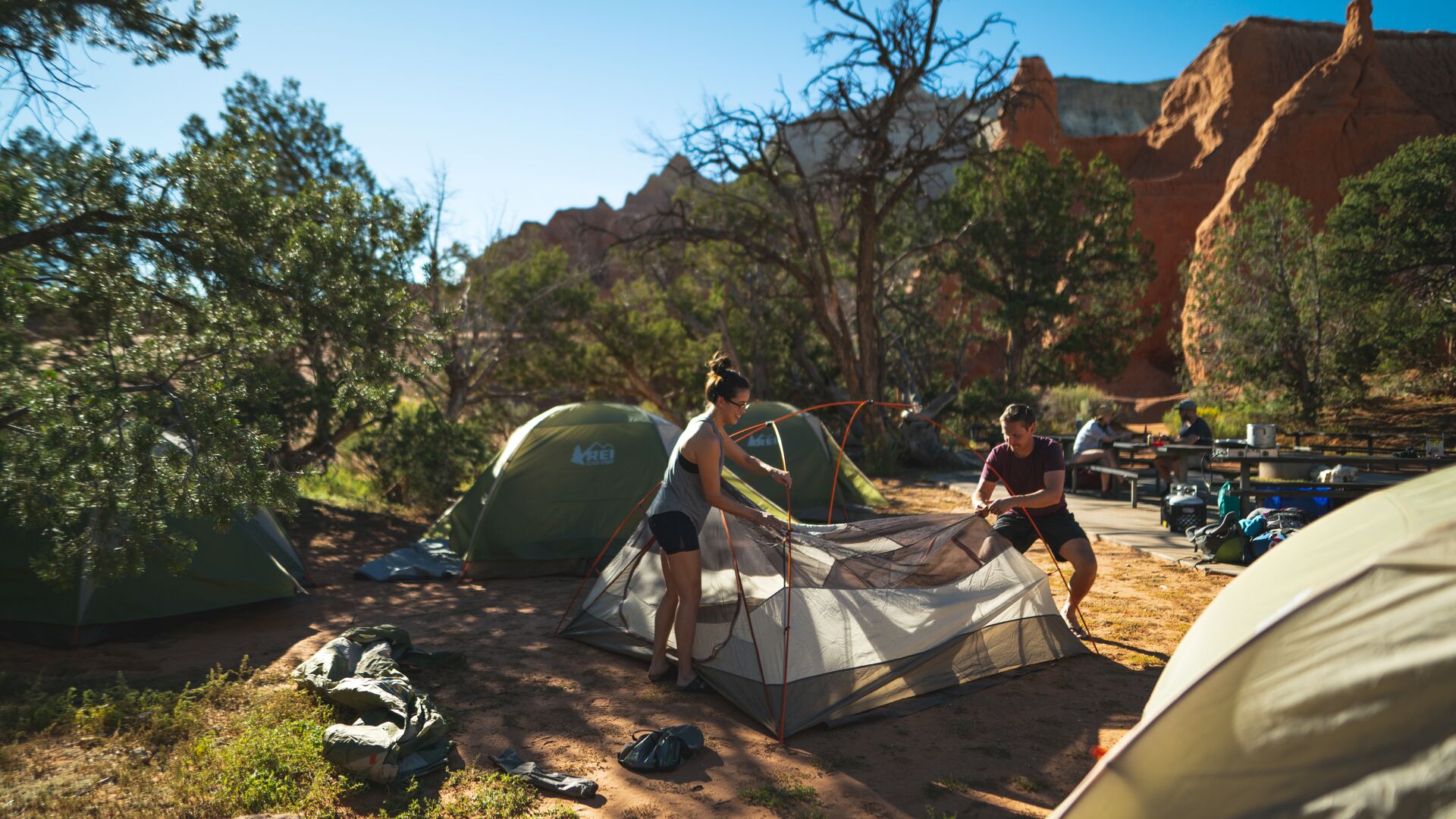
While campgrounds in the area fill up months in advance, Intrepid will take care of the arrangements and provide the equipment so you can just show up and reap the benefits.
Bryce Canyon National Park, Utah
Bryce Canyon has so much to offer among its whimsical formations, and with such impressive scenery, you should spend as much time there as you can squeeze in. What better way to get the most out of the park than to sleep right there?
This park features some of the best campgrounds, offering remote spots and easy access to hiking trails. During the day, enjoy the striking contrast of red rocks against blue skies and marvel at the star-studded sky at night.
With flexible itineraries with Intrepid, free days allow you to sneak away from the group, explore the park on your own and choose activities based on your interests. With a local leader as your resource for advice and recommendations, you can take advantage of everything the park has to offer.
Grand Canyon National Park, Arizona
With 277 miles of river, an 18-mile width and a mile-deep canyon, this park has a lot to explore. If you want to maximize your experience, a camping trip is the way to go.
The Grand Canyon’s layered views and vast landscape make for a spectacular opportunity for an overnight stay. With camping options offered by Intrepid, your immersive experience awaits you and you don’t even have to worry about packing the camping gear.


